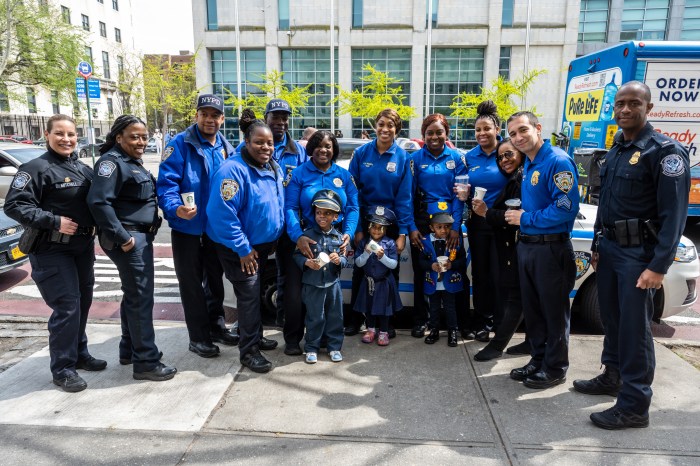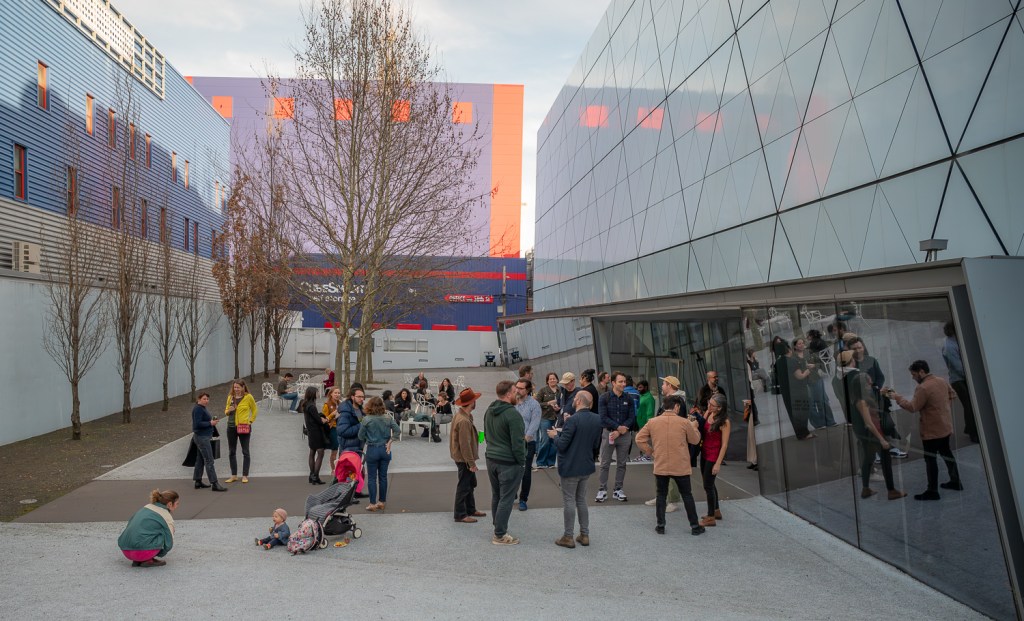The New York Landmarks Conservancy has announced the winners of the 22nd Lucy G. Moses Preservation Awards. Newtown High School in Elmhurst and the TWA Terminal at JFK International Airport are two of the recipients that will be recognized at an April 25 ceremony at the New York Historical Society, also one of the award winners.
The coveted awards, called the “Preservation Oscars,” are named after dedicated New Yorker Lucy G. Moses. They recognize individual leadership and outstanding preservation work. This work provides jobs, promotes tourism, maintains beloved institutions and protects the character of the city.
“The awards are a celebration of outstanding restoration projects throughout the city as well as some extraordinary individuals,” said Peg Breen, President of The New York Landmarks Conservancy. “The awards are a perfect reminder that preservation creates local jobs and encourages tourism. It’s a joyous evening as we salute great work and great people.”
Newtown High School, in Elmhurst, is one of Queens’ most prominent buildings. The school has been in operation at its current location for over 100 years and occupies an entire city block. The oldest extant portions date to 1921, designed by famed Superintendent of School Buildings C.B.J. Snyder in a Flemish Renaissance Revival style. Snyder’s choice of this style demonstrated his awareness of New York’s, and particularly Elmhurst’s, beginnings as a Dutch colony. Of Snyder’s 400 school designs, it is one of the few in this style, and it was designated a city landmark in 2003.
Snyder’s design features a dramatic 169-foot tower that is visible throughout the neighborhood and gives the school its slogan – “We Tower Above the Rest.” On the tower, deteriorated turrets were rebuilt to match original brick and terra cotta. Copper on the new turret roof now matches the main cupola.
Polychromatic murals were restored with new terra cotta, which involved an extensive color matching process, unit replacement, cleaning, patching and re-glazing by an artist. The roof was repaired and masonry restored. Façade work included masonry repointing and lintel reconstruction. Failed graffiti prevention pigments were removed and the walls were restored to their original colors. Graffiti remnants were erased and up-to-date treatments were applied to prevent future abuse. The 2011 renovation was completed under the auspices of the NYC School Construction Authority.
Eero Saarinen’s TWA Terminal at JFK International Airport has been an icon of modern architecture since it opened in 1962. While the Terminal was an experiment in aviation technology, incorporating the first use of jetways and baggage carousels, the building itself is a structural marvel – four concrete lobes are in perfect balance, supported by only four piers.
The airline industry quickly outpaced the unique Saarinen design. To accommodate demands of capacity, security, accessibility and passenger amenity, the terminal underwent unsympathetic alterations and additions. During the 1990s, TWA was not able to maintain the building, and it was closed.
In 2002, the Port Authority of New York and New Jersey undertook a program to stabilize and secure the building. The restoration started with archival investigations, interviews with surviving design team members and materials analysis. The terminal was listed on the National Register of Historic Places and documentation completed prior to construction.
Improvements to the exterior included removal of inappropriate additions, repairs to concrete, and the replacement of asbestos-containing material with a new acoustic coating. The failing curtain wall was restored, with the gasket system replaced, and an unsightly purple solar film removed. The original manufacturer in Michigan provided new glazing. Skylights that separate the four concrete shells and have leaked since the 1960s were also replaced.
The public areas were restored, incorporating life and fire safety improvements, so the terminal may re-open to the public for a passage to the JetBlue terminal and for special events. On the interior, the sunken seating area was restructured and new banquettes and benches installed. Enhanced lighting dramatically illuminates the interior. A new accessibility lift, emergency lighting, fire alarms and a smoke detection system were incorporated into the restoration. Finally, the original “Solari” information boards were redesigned with LCD technology and reactivated. The most challenging part of the project was the restoration of the ubiquitous “penny tile” interior finish. Once sourced, over three million pieces were produced for use in this project and to have on hand for future restoration.


































